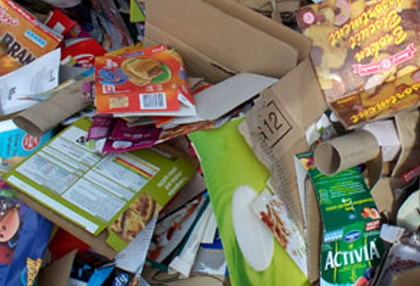 |
| Industrial landscape |
Many everyday activities create waste. Even cutting the lawn makes grass clippings that can stress water bodies such as streams and rivers if too much washes into the water.
This is because the grass is food for in the water. Microorganisms can grow quickly in great numbers, and rob the water of the oxygen that is needed by fish and other living creatures inhabiting the water.
One person alone might not produce enough waste material to contaminate a water source. However, a community of many people and large industries produce large amounts of waste.
  |
For example, the city of Halifax, Nova Scotia, on Canada’s east coast still directly discharges sewage into the harbor. Even though the city is relatively small (approximately 300,000 people), millions of gallons of raw sewage pour into the water each day.
If enough waste gets into a stream, river, pond, lake, or other body of water, the water can become contaminated and unhealthy for animals and humans who use the water as a source of drinking water or for recreation. Some of this waste can also move down through the soil and rock to contaminate water present below the surface (groundwater).
Waste water can carry large numbers of bacteria that normally live in the intestinal tract. Some of these such as Salmonella and Shigella can cause serious diseases if ingested. As well, waste water can carry compounds like mercury, lead and other metals that can be dangerous to health if ingested.
Commercial waste
Commercial operations are those that provide a service or sell a product. A feature that is common to most commercial operations is a paved parking lot. Grocery stores, restaurants, shopping malls, movie theatres, office buildings, and libraries, typically have spots where vehicles are parked.
Vehicles can leak oil, antifreeze, and other fluids that are used to keep engines running smoothly, brakes operating safely, and windshields clean. These fluids gather on the pavement and are washed away in rains or when accumulated snow melts. If a water body is located nearby, the wastes could flow into the water.
 |
| Commercial waste |
Wastes accumulated on concrete are particularly washed away during heavy rainstorms, as drains that are usually placed in the parking lot cannot hold all of the sudden, heavy flow of water.
Excess packaging can also become a source of commercial waste, especially when a careless individual discards it as litter. Paper and plastic products that litter the ground can be blown or carried by runoff (water that flows over ground surface) to a water body.
In the water litter can alter or even stop the natural flow of the natural streams that drain larger bodies of water. Litter in the water also harms animals and other organisms. For example, the plastic rings that keep soft drinks and beer together in six or eight-packs can become entwined around the necks or beaks of birds and choke them.
Many businesses store liquids near the workplace. Gas stations have large underground tanks to store the gas. Businesses requiring heat during colder winter months may have large storage tanks for oil.
Both above ground and underground storage tanks can develop cracks and the chemicals inside can leak. When this happens nearby surface waters are threatened.
Groundwater is also at risk for contamination, especially when the leak is from an underground tank. Contaminants in groundwater can flow sideways, spreading for hundreds of yards (meters) away from the site of the spill.
Most communities require chemical storage tanks to be regularly checked for leaks to prevent groundwater or surface water sources from contamination by commercial waste.
The sewage from commercial and industrial facilities, as well as water that has been used in the manufacturing processes, usually ends up in a plant that is designed to treat the wastewater before it is released back to the environment.
The treatment removes the solid material and many of the microorganisms and chemicals from the water. In large cities, millions of gallons of this wastewater are treated every day. However, there are still some big cities in North America and around the world where untreated wastewater is dumped directly into natural waters.
Industrial waste
 |
| Industrial waste |
Some, but not all of the water can be treated to remove the chemicals, and some of the wastewater can be released to the environment. Some water is too contaminated to release back to the environment. This water can be retained in storage lagoons. Of course, as time goes by and the volume of this water increases, the storage capacity of such lagoons will be reached.
Some industrial waters, such as those used in various manufacturing processes, contain metals that can make humans ill even if ingested in low amounts.
These so-called heavy metals are recognized as a hazard, and many federal, state and municipal governments have rules in place to limit the amount of heavy metals that can be in industrial wastewater. The regulations governing the level of contaminants that are considered acceptable varies from country to country.
Some jurisdictions enact regulations that are stricter than found elsewhere. For example, the manufacturing zone in Mexico near the border with the United States has regulations that are relatively lax. Much environmental damage is occurring in this region.
Many industries treat the water that is released from the factory. Water can be treated physically, such as by passing the water through a barrier that contains tiny holes in it (a filter).
The filter allows water to pass, but traps larger chemicals. Water can also be passed through materials, which will bind to substances like metals. These and other techniques help ensure that the industrial water is reduced in the amount of harmful molecules.